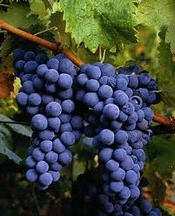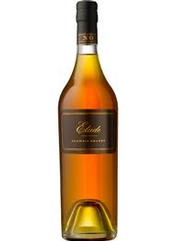My choice for wine of the year 2010 is not a specific brand of wine, but a grape: Touriga Nacional. I’m not suggesting that Touriga Nacional makes the tastiest wine in the world, or that Touriga based wines are the best I’ve tasted all year (though I have had some mighty good ones). One of the reasons for my choice is that this little grape is proving to be a survivor in a world where indigenous species are rapidly  disappearing.
disappearing.
Of the 10,000 or so different grape species in the world (of which some 3,000 are table grapes), it seems a pity that the wine drinking public focuses on only about six of them. But perhaps the tide is shifting. In Australia, for example, there is currently enormous interest in alternative or “heritage” varieties rather than the same old-same old Chardonnay, Sauvignon Blanc, Cabernet Sauvignon, Merlot, and Syrah. Young and new wine drinkers everywhere are apparently seeking out less known wines, and surveys indicate that today’s consumers are expressing an interest in authenticity rather than international style.
But what particular attributes does Touriga Nacional have? Well, for one thing, it’s easy to pronounce and to spell. It is a wine blessed with an exuberant personality and an intensely appealing fragrance that typically evokes Earl Grey tea, citrus, and violets (I recently heard someone describe Touriga Nacional as having a “happy aroma”).
Among Touriga Nacional’s many virtues is that it is proving excellent as a stand-alone grape as well as an exceptional component in a blend. It has long been used as one of the most prevalent blending wines in Port, to which it adds complexity above all, but also balance, and a capacity for great aging. On its own Touriga tends to yield wines with a medium-light body and a wonderfully refreshing character. These can be great food wines.
Lately, thanks in part to its ability to thrive in many different terroirs and climates, Touriga Nacional is popping up across the globe, from South Africa, to Virginia, from Greece to New Zealand. In some places it is vinified on its own, but more often it is used in a blend for its potential to contribute deep color and distinctive aromas. In Argentina it is being blended with Malbec, in Australia with Shiraz, and undoubtedly with Cabernet in California. This remarkably versatile grape has certainly proven to be a both a charming soloist and a terrific ensemble player.
One of the poignant things about Touriga Nacional’s story is that it came close to extinction in the 1970s, a time when quantity was valued more than quality in Portuguese vineyards. Since Touriga Nacional tends to produce less volume than many other grapes it was rapidly being ripped out and replaced by vines that produced large crops. Happily, Portuguese vintners came to their senses in the nick of time, and today Touriga Nacional is one of the country’s greatest vinous assets. It appears in virtually every wine region in its homeland. In the Douro it is mostly blended with other grapes to make the trendy new wines produced by the talented group of vintners known colloquially as the “Douro Boys.” Dao may be the very best region for Touriga Nacional wines, while in Alentejo it occasionally lacks acidity (perhaps because of the ultra-hot growing conditions there).
I had the good fortune to taste a number of Touriga Nacional wines in Portugal very recently. Among the ones I particularly liked were Churchill’s Estates 2008 (Douro), Encontro 2008 (Bairrada), Inquieto 2008 (Duoro), Quinta da Pedra Alta 2007 (Douro), and Quinta das Marias 2008 (Dao). Some of these are available in select markets in the US.
Winery of the Year:
Etude Wines from California’s Carneros district is my winery of the year–not on account of one of its wines, but rather its alluring XO Alambic Brandy.
When it comes to brandy, Cognac holds the key to my heart and palate, but I must confess that I recently cheated on my beloved. It all  happened one night when I was introduced to Etude’s XO Alambic Brandy, which comes from an historic estate in Carneros, California. I can’t claim that it was necessarily love at first sight, but with the first sniff I was pretty well along the path of seduction. XO’s layered fragrance of sun-warmed rose petals, slivers of orange peel dipped in darkest chocolate, and warm roasted almonds filled me with desire. How could I resist? When my lips parted, a rush of flavors including juicy peaches, figs, apricots, and even Raisinets burst across my taste buds, followed by the long, long lingering thrill of exotic spices. This XO brandy was processed in traditional alembic pot stills and hand-distilled two times. It’s always a good thing when the object of one’s affections is both rich and well balanced, which Etude XO is–thanks to long aging in fine French oak casks. Part of its charm and multifaceted personality is due to having been crafted from a blend of Pinot Noir, French Colombard, Chening Blanc, Palomino, Muscat and Folle Blanche grapes. Sadly, our fling lasted only a few weeks. The brandy is gone, leaving behind nothing but an empty bottle as a memento of our good times together.
happened one night when I was introduced to Etude’s XO Alambic Brandy, which comes from an historic estate in Carneros, California. I can’t claim that it was necessarily love at first sight, but with the first sniff I was pretty well along the path of seduction. XO’s layered fragrance of sun-warmed rose petals, slivers of orange peel dipped in darkest chocolate, and warm roasted almonds filled me with desire. How could I resist? When my lips parted, a rush of flavors including juicy peaches, figs, apricots, and even Raisinets burst across my taste buds, followed by the long, long lingering thrill of exotic spices. This XO brandy was processed in traditional alembic pot stills and hand-distilled two times. It’s always a good thing when the object of one’s affections is both rich and well balanced, which Etude XO is–thanks to long aging in fine French oak casks. Part of its charm and multifaceted personality is due to having been crafted from a blend of Pinot Noir, French Colombard, Chening Blanc, Palomino, Muscat and Folle Blanche grapes. Sadly, our fling lasted only a few weeks. The brandy is gone, leaving behind nothing but an empty bottle as a memento of our good times together.
7
